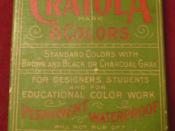Ever since Archimedes, a Greek mathematician, inventor and physicist who lived from 287 - 212 B.C., exploded out of his bathtub and ran down the street naked yelling "Eureka," which means "I found it," the principles of water displacement and buoyancy have been understood. In order to determine that King Heiro's crown was indeed made of gold and not silver covered with gold, Archimedes needed two measurements, volume and density.
When a solid object is immersed in water, it moves the same amount of water that it occupies as a solid object. The space that something occupies is called volume. A bar of gold (gold ingot) equal in weight to the crown was sunk in a shallow tub. Archimedes added water to the tub until it was about to over-flow. When the gold was carefully removed, the water level fell slightly. Some historians think the water level didn't fall enough to be measured.
If the water level could be measured, Archimedes might have calculated the volume of the gold. Knowing the width and length of the tub he could have determined the volume of gold by this relation:
Volume = length x width x height water fell
Next, he placed the crown in the water. If the crown had the same volume, the water would again rise to the brim of the tub. If there was silver in the crown which takes up more space for the same weight, the water would rise to the brim and spill over.
And it did. The gold crafters that cheated the king were caught by a few drops of water. The weight of an object occupying a given volume is called density. Because gold is more dense than silver, the gold was placed in the tub first. What if gold was less...


